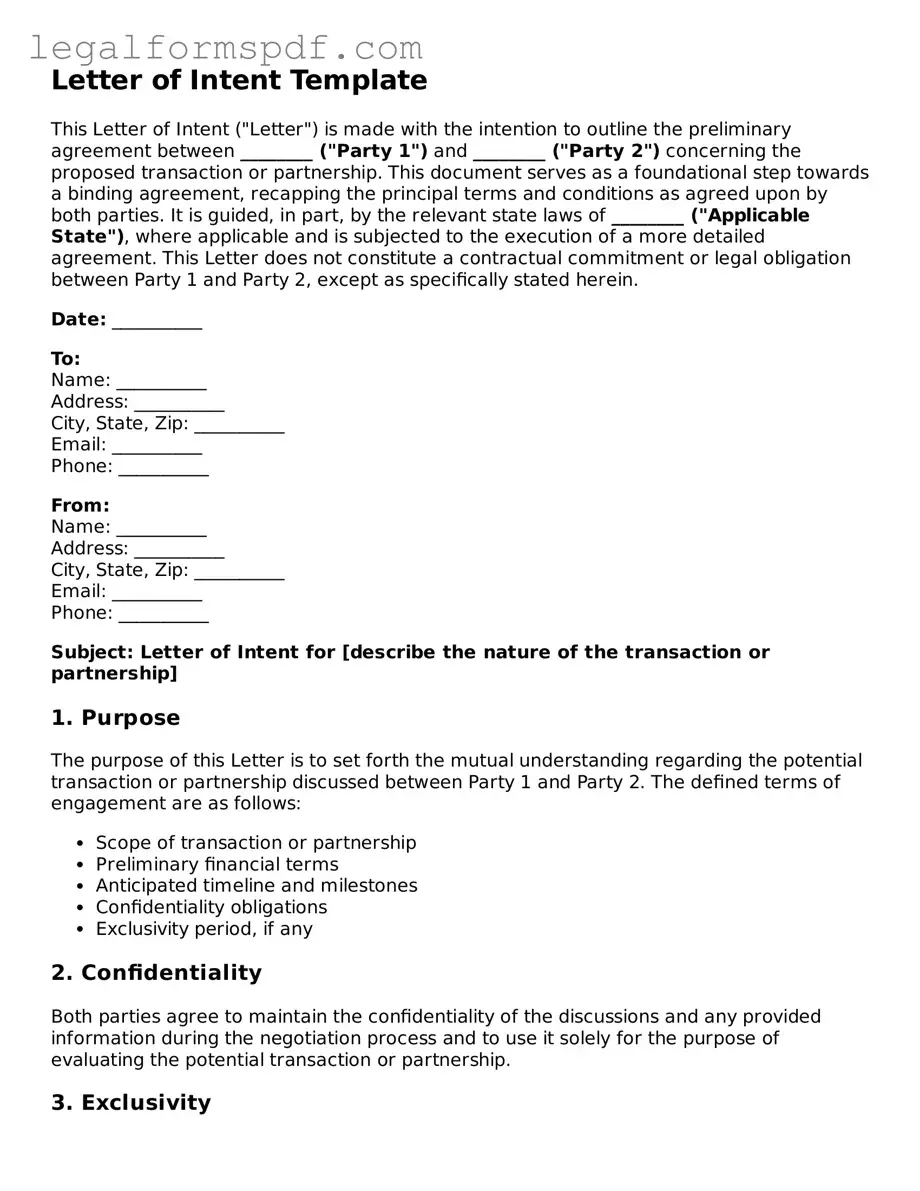Letter of Intent Template
This Letter of Intent ("Letter") is made with the intention to outline the preliminary agreement between ________ ("Party 1") and ________ ("Party 2") concerning the proposed transaction or partnership. This document serves as a foundational step towards a binding agreement, recapping the principal terms and conditions as agreed upon by both parties. It is guided, in part, by the relevant state laws of ________ ("Applicable State"), where applicable and is subjected to the execution of a more detailed agreement. This Letter does not constitute a contractual commitment or legal obligation between Party 1 and Party 2, except as specifically stated herein.
Date: __________
To:
Name: __________
Address: __________
City, State, Zip: __________
Email: __________
Phone: __________
From:
Name: __________
Address: __________
City, State, Zip: __________
Email: __________
Phone: __________
Subject: Letter of Intent for [describe the nature of the transaction or partnership]
1. Purpose
The purpose of this Letter is to set forth the mutual understanding regarding the potential transaction or partnership discussed between Party 1 and Party 2. The defined terms of engagement are as follows:
- Scope of transaction or partnership
- Preliminary financial terms
- Anticipated timeline and milestones
- Confidentiality obligations
- Exclusivity period, if any
2. Confidentiality
Both parties agree to maintain the confidentiality of the discussions and any provided information during the negotiation process and to use it solely for the purpose of evaluating the potential transaction or partnership.
3. Exclusivity
For a period of __________ days from the date of this Letter, Party 1 and Party 2 agree not to engage in negotiations or discussions with any other party with respect to the proposed transaction or partnership outlined herein, without the written consent of the other party.
4. Due Diligence
Both parties agree to cooperate in good faith in conducting due diligence. This includes the exchange of relevant information, documents, and access to personnel as necessary to evaluate the proposed transaction or partnership.
5. Binding Provisions
While this Letter itself does not constitute a binding agreement to proceed with the transaction or partnership, certain provisions shall be binding, including:
- Confidentiality
- Exclusivity
- Governing Law: This Letter shall be governed by the laws of the State of __________.
6. Non-Binding Terms
Except for the provisions explicitly stated as binding in Section 5, all other terms and conditions outlined in this Letter, including the performance of the proposed transaction or partnership, are not binding upon either party.
This Letter is executed by the authorized representatives of Party 1 and Party 2 on the dates signed below, signifying their intention to proceed in good faith towards a binding agreement based on the terms outlined herein.
Party 1: __________
Signature: __________
Date: __________
Party 2: __________
Signature: __________
Date: __________
